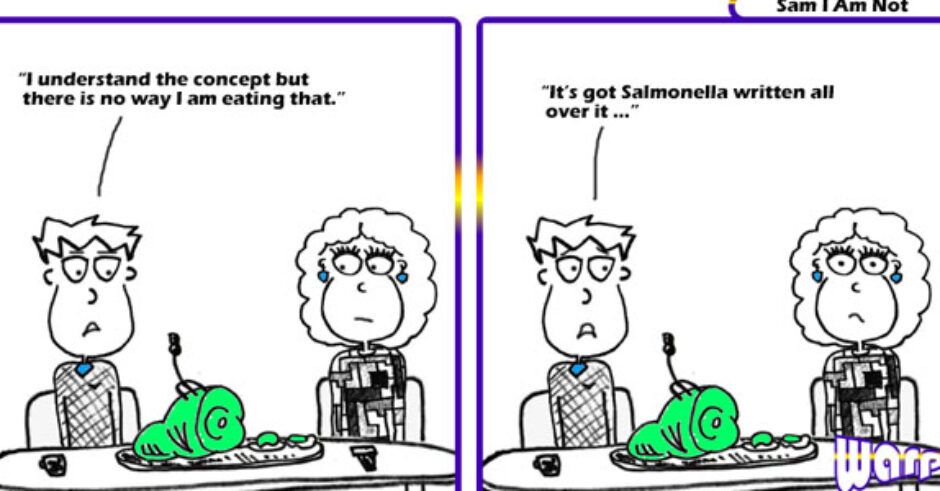I did an exercise recently with a group, and I felt like Sam I Am from the Dr. Seuss book, “Green Eggs and Ham”. If you remember the book, the character “Sam I am” is trying to get someone to try green eggs and ham. There’s a whole rigamarole of objections until he finally tries them and likes them.
“I do not like them in a box. I do not like them with a fox. I will not eat them in a house. I will not eat them with a mouse. I do not like them here or there. I do not like them anywhere.”
Green Eggs and Ham, Dr. Seuss
As a reference point, the exercise was affinity prioritization. Similar to affinity mapping, it’s a facilitation technique where a group of people cluster around a wall and move sticky notes around to either prioritize or organize items. I love this exercise because chaos turns to order in an amazingly short time, and misalignments emerge immediately. No one ever believes it will work, and to date, it always has. It’s one of the exercises that’s hard to describe in rational terms because it relies on human interaction.
It took 4 weeks to prep and get agreement to do it, and 7 minutes to complete the exercise. Green eggs and ham.
“You do not like them. So you say.
Try them! Try them! And you may.
Try them and you may, I say.”
Sam I Am in Dr. Seuss’ Green Eggs and Ham
Why is it so hard to get people to simply try something? Is there anything we can do to shortcut the objection process? I can’t claim to be an expert in overcoming obstacles, but here are some things I’m committed to trying.
You can’t. This is the first option and the assumption I’ve been working with to date. You can’t shortcut the process, tenacity is your best bet. People come along eventually. But gosh, this is wasteful. Let’s explore and see if there’s a better way.
Let the group decide. I often approach change as “ok here’s what we’re going to do”, which opens up an opposition from some. I’ve seen other coaches use a softer approach like “Here’s something I’ve seen work well. Here’s why. Wanna try it?” This approach takes patience because they might say no, or it might take a long time. With 15 minutes daily standups you might be able to get willingness from words, from affinity mapping it’s harder for people to envision.
Find out what’s really blocking. The objection may not be to the exercise. The objection may be a window into a deeper issue. In my example above, a colleague pointed out to me that I was scaring the team, so I shifted a bit to address the issues first. Think about what might really be going on. Is there fear of the outcome? Is there face-saving that needs to happen because the group has spent months on things that could now take days? Solving these underlying issues can get you better results than the activity itself.
The Business Transformation Network has posted this article in partnership with WorkBytes.




